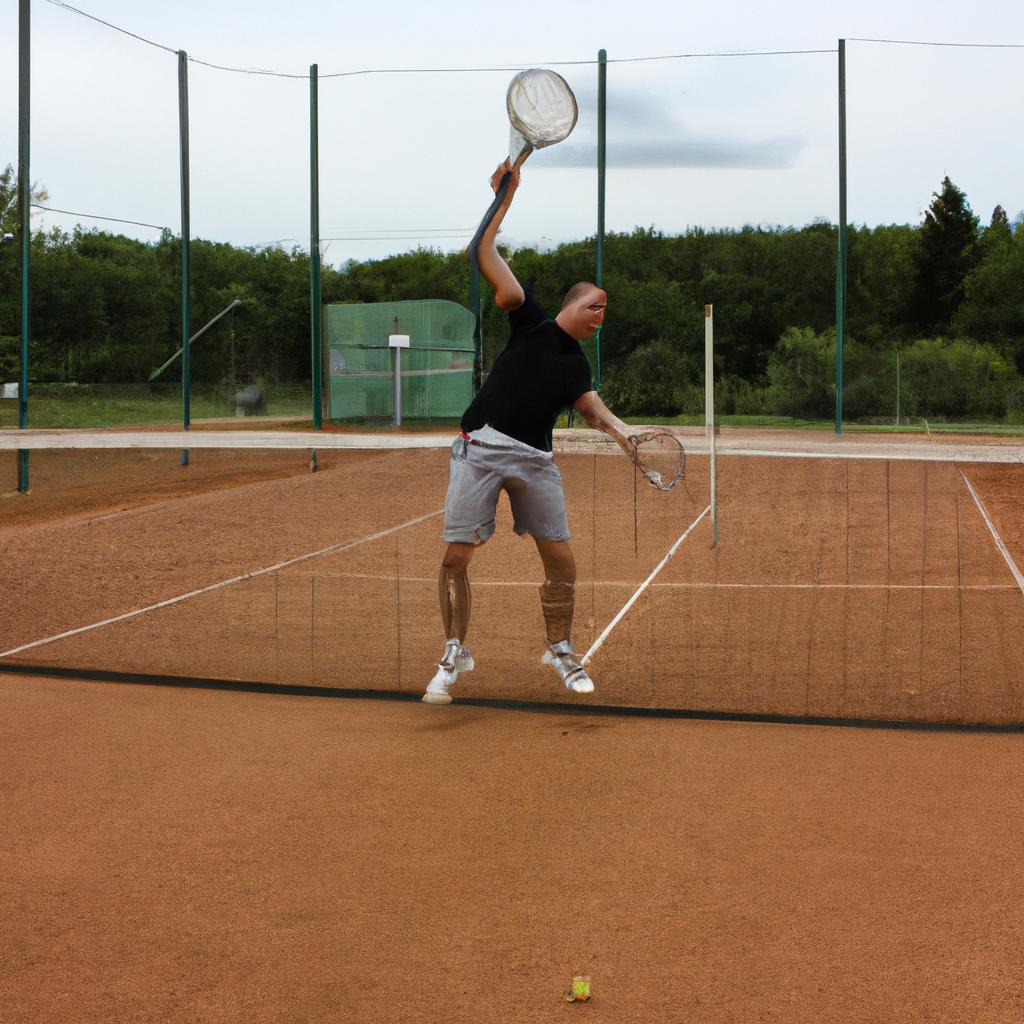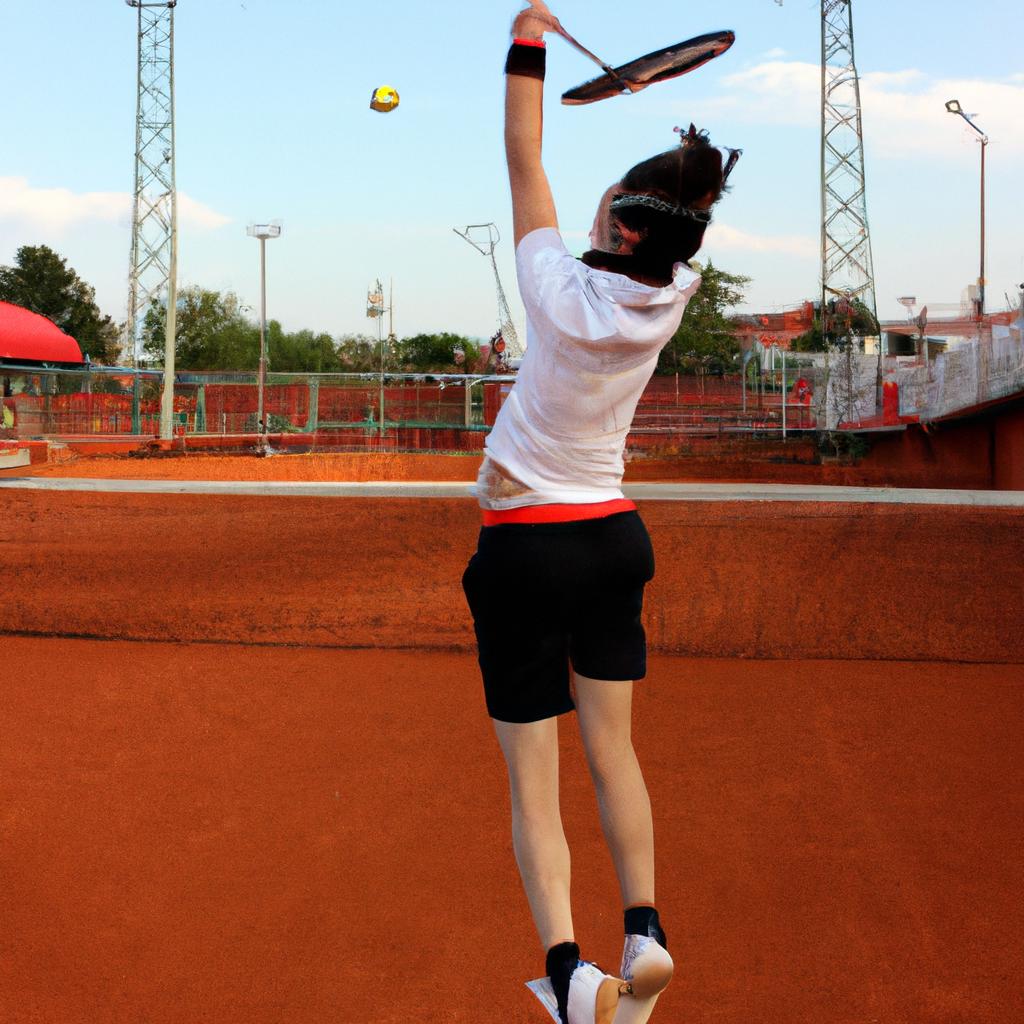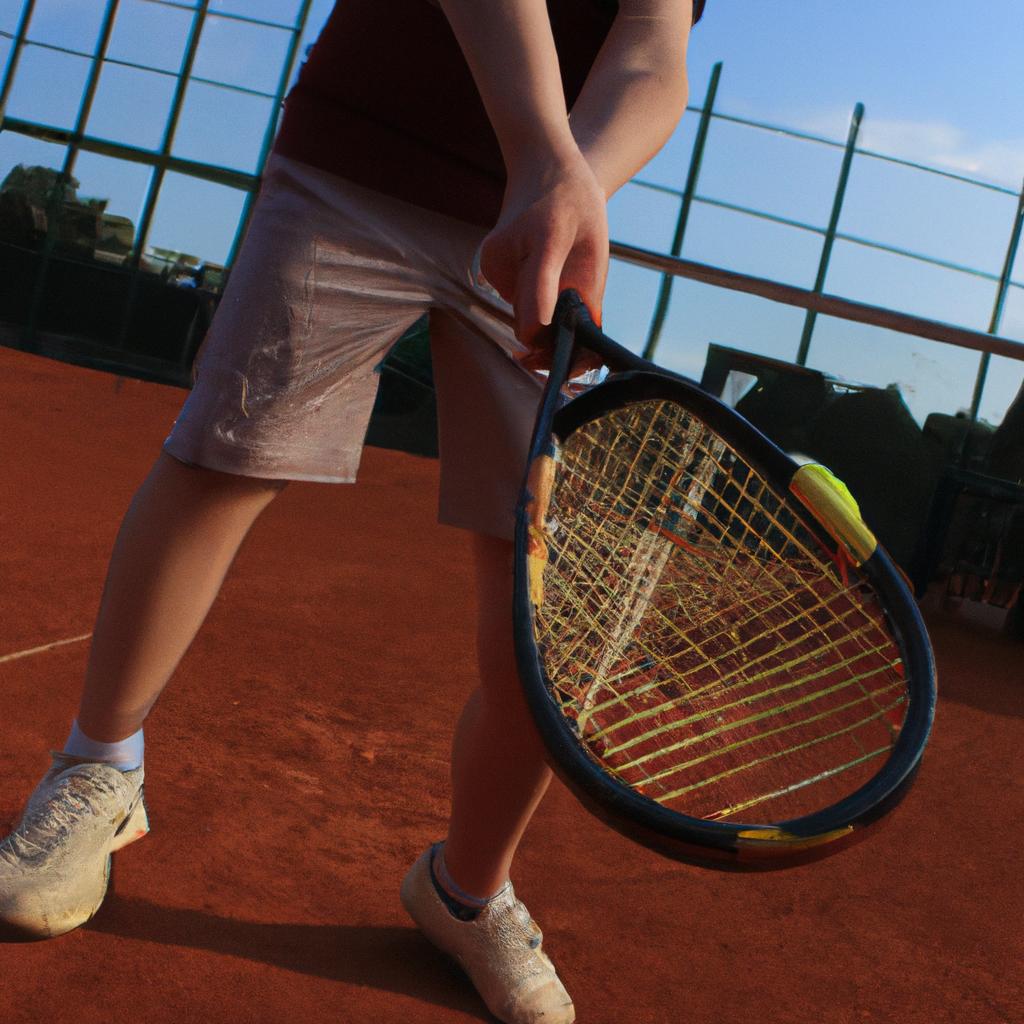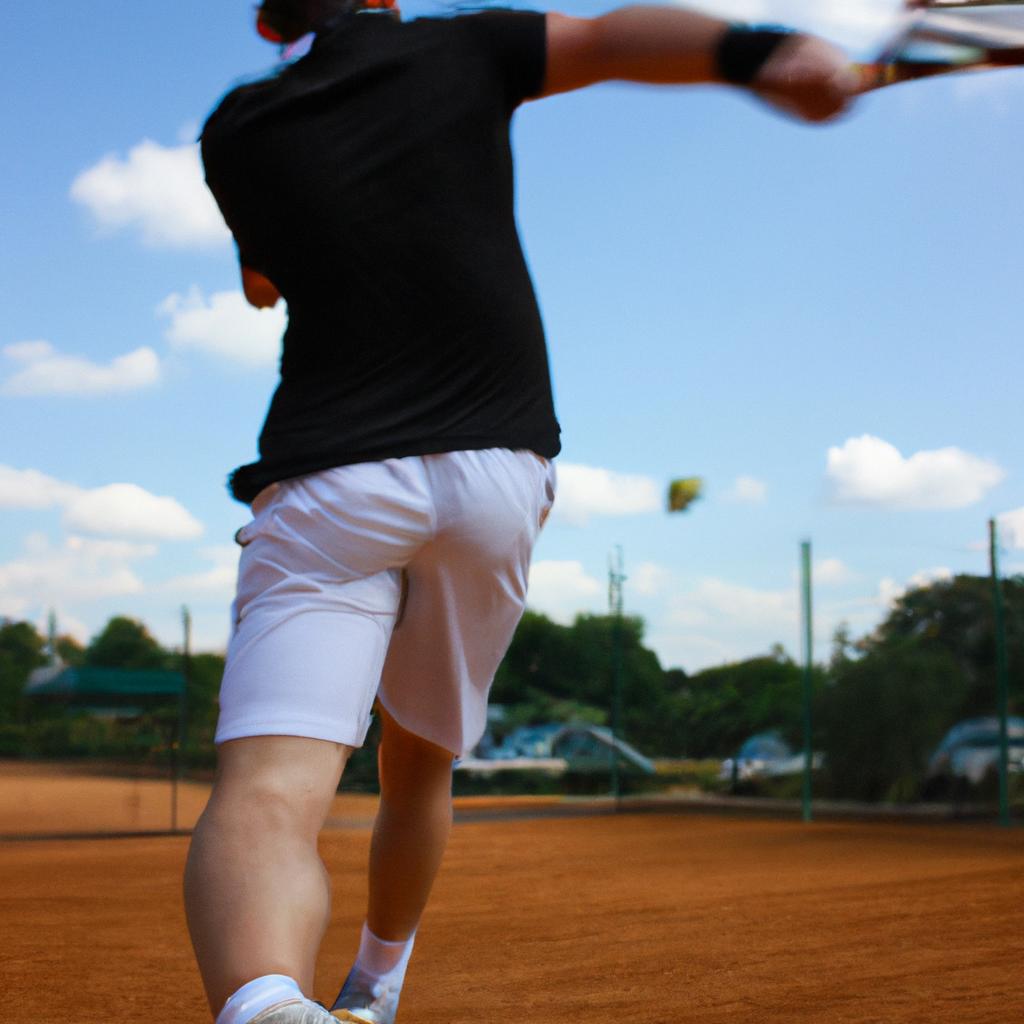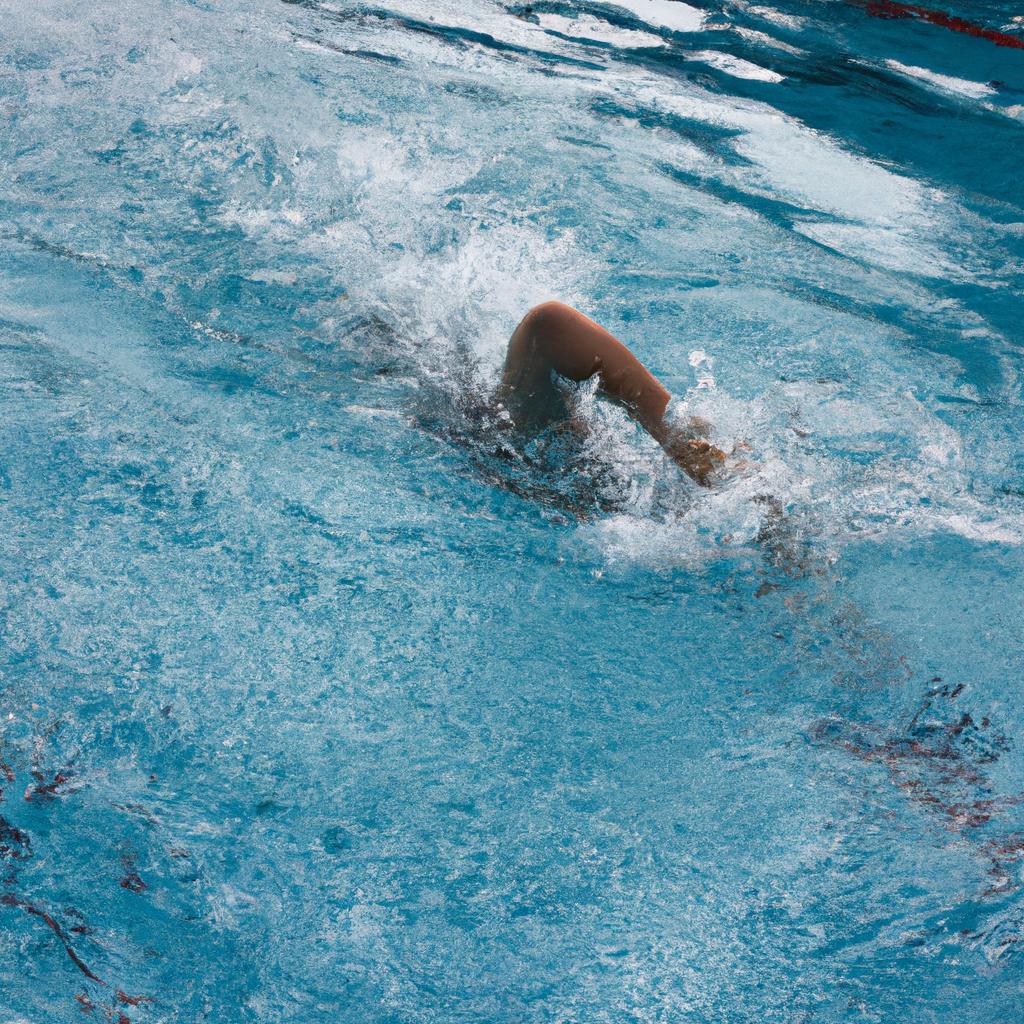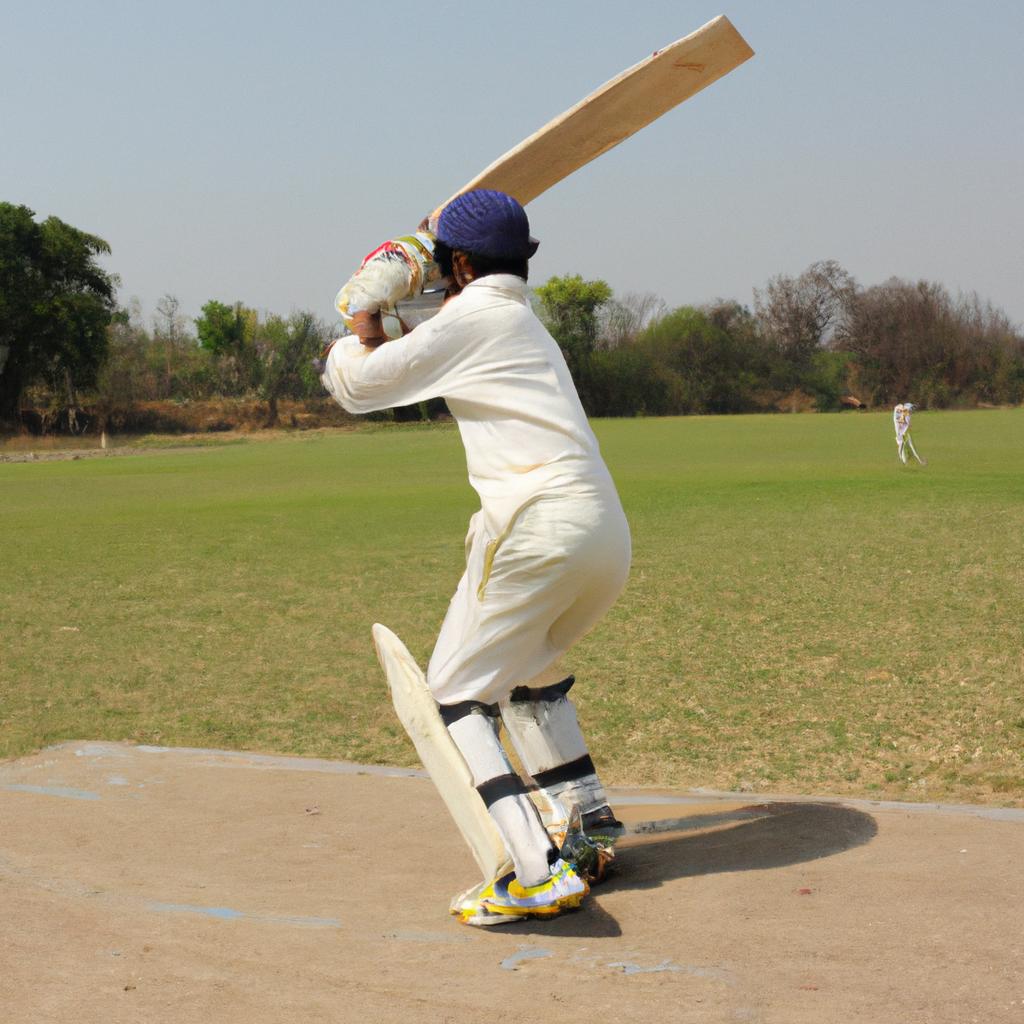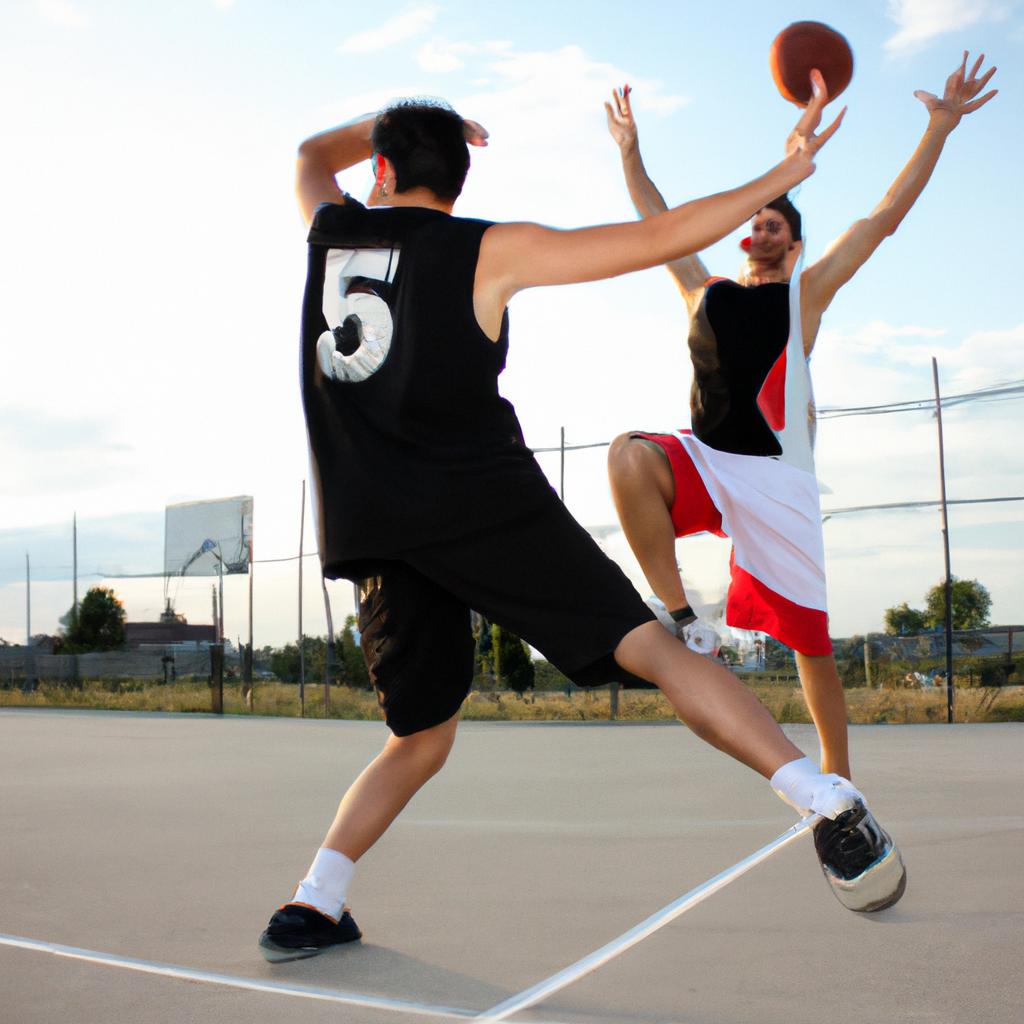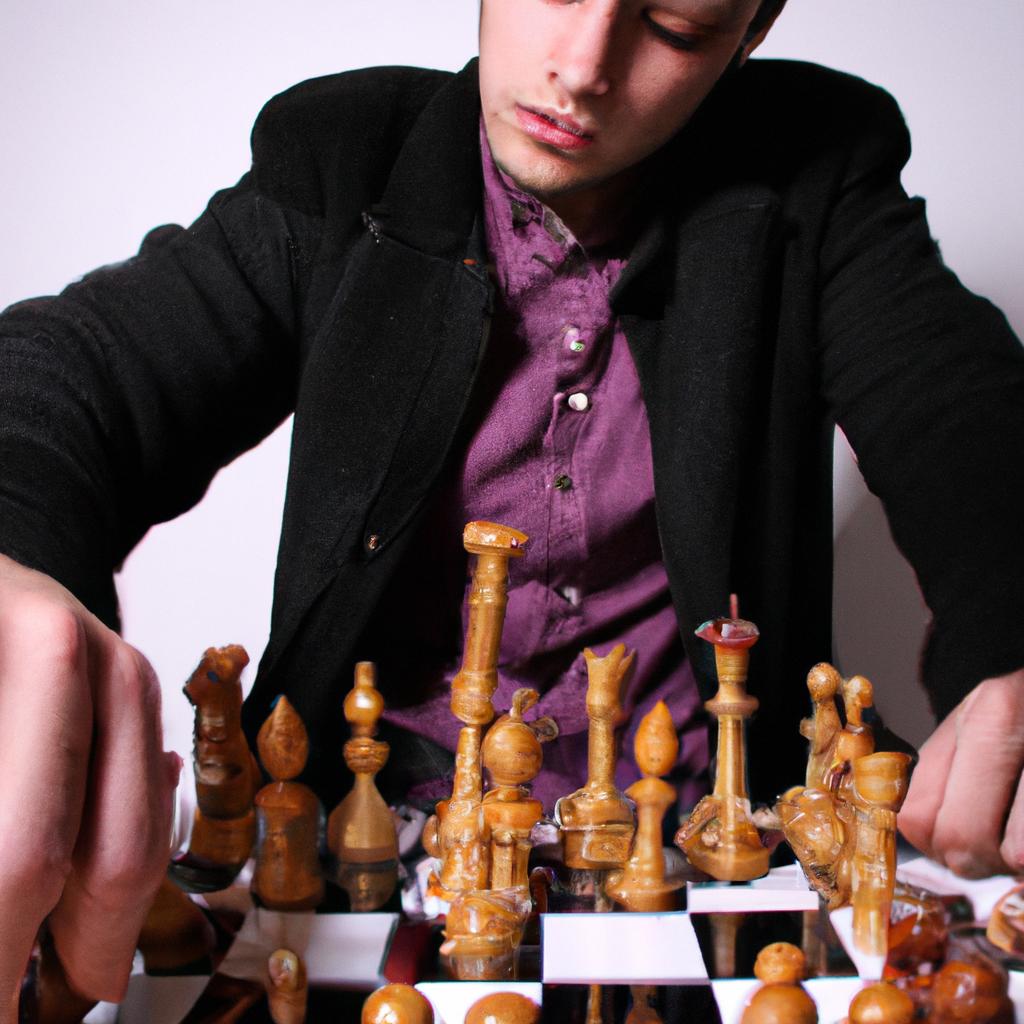One of the most intriguing aspects of the game of tennis is its ability to be played on a variety of different court surfaces. Each surface offers unique characteristics that can greatly impact the style of play and strategies employed by players. For instance, consider an imaginary scenario where two top-ranked professional tennis players face off against each other in a championship match. Player A has built their reputation on fast-paced aggressive shots, while Player B specializes in precision and strategic shot placement. The outcome of this hypothetical match could vastly differ depending on the type of court surface they are playing on.
In the world of tennis, there are four main types of court surfaces: grass, clay, hard court (concrete or asphalt), and carpet courts (an artificial surface). These surfaces not only vary in terms of composition but also affect ball speed, bounce height, player movement, and overall gameplay dynamics. Grass courts are known for their low bounce and fast pace, making it favorable for big servers who can exploit unpredictable bounces. Clay courts offer slower ball speed due to higher friction between the ball and the surface, allowing players more time to react and engage in long rallies. Hard courts provide a medium-pace playing environment with consistent bounce and are commonly used in major tournaments worldwide. Lastly, Lastly, carpet courts, although less common nowadays, offer a fast-paced surface with low bounce similar to grass courts but with more consistency in terms of ball behavior.
Grass court
Grass court is one of the most traditional and iconic types of tennis courts. This surface is known for its lush green grass, which provides a unique playing experience compared to other surfaces. Grass courts are typically found in prestigious tournaments such as Wimbledon, where players showcase their skills on this classic surface.
To illustrate the impact of playing on a grass court, consider the case study of Roger Federer. As an exceptional grass-court player, Federer has won a record-breaking eight Wimbledon titles throughout his career. His ability to adapt his game to the specific characteristics of this surface demonstrates the importance of understanding how different types of courts can influence gameplay.
Playing on a grass court offers several advantages and challenges that differ from other surfaces:
- Speed: Grass courts are generally considered to be fast-paced due to their low bounce and slippery nature.
- Ball behavior: The ball tends to skid and stay low, making it difficult for players to execute high bounces or topspin shots.
- Footwork: Players need quick reflexes and excellent footwork skills to maintain stability on this unpredictable surface.
- Strategy: Grass court matches often involve shorter points, requiring players to employ aggressive tactics and efficient shot-making abilities.
- Speed
- Ball behavior
- Footwork
- Strategy
In addition to these notable features, let’s explore some key differences between various types of tennis courts using a table format:
| Surface | Speed | Bounce | Dominant Shots |
|---|---|---|---|
| Grass Court | Fast | Low | Serve-and-volley |
| Clay Court | Slow | High | Baseline rallies |
| Hard Court | Medium | Regular/medium | All-round play |
This table highlights how each type of court possesses distinct characteristics that can significantly affect gameplay strategies and outcomes.
Transitioning into the subsequent section about the clay court, it is important to note that while grass courts offer a unique playing experience, they are not the only surface in tennis. Another widely recognized type of court is the clay court, which presents its own set of challenges and advantages for players.
Clay court
Having explored the unique characteristics of grass courts, we now turn our attention to clay courts – another popular surface in the game of tennis.
Clay Court
To understand the significance of clay courts, let us consider a hypothetical scenario. Imagine two professional players competing against each other on a clay court. As they engage in intense rallies, their sneakers leave distinct marks on the fine red powder beneath them. These marks not only create an aesthetically pleasing pattern but also contribute to the strategic nature of the match. Such is the allure of playing on clay.
When it comes to playing on clay courts, several key factors come into play:
- Slower pace: Due to its composition and texture, clay tends to slow down the ball upon impact. This characteristic enables players to execute more precise shots and engage in longer rallies that require patience and endurance.
- High bounce: Clay surfaces have higher friction than grass or hard courts, resulting in a higher ball bounce. This added height gives players additional time to react and adjust their positioning during points.
- Player strength: The nature of playing on clay often favors those with superior footwork and defensive skills as these attributes are crucial for sliding effectively across the surface while maintaining balance.
- Adaptation required: Players need to adapt their game style when transitioning from other surfaces to clay due to its uniqueness and specific demands.
| Factors | Impact |
|---|---|
| Slower pace | Allows for precision and long rallies |
| High bounce | Provides extra reaction time |
| Player strength | Rewards agility and defensive abilities |
| Adaptation required | Necessitates adjustments in gameplay |
In conclusion, clay courts offer a distinctive playing experience characterized by slower pace, high bounce, reliance on player strength, and the need for adaptation. By understanding these factors, players can enhance their strategies and capitalize on this particular surface’s advantages. As we move forward, let us explore another common type of tennis court – the hard court.
Now shifting our focus from clay courts, let us delve into the world of hard courts and uncover its unique attributes.
Hard court
Types of Tennis Court: The Varied Surfaces in the Game of Tennis
Clay court is just one of several types of tennis courts that players encounter in the game. Another commonly used surface is the hard court, which offers a different experience and presents its own set of challenges for players. For instance, consider the hypothetical case of Maria, an experienced clay court player who decides to compete on a hard court for the first time.
Transitioning from clay to hard court requires adjustments in technique and strategy. First and foremost, Maria needs to adapt her footwork as she transitions from sliding on clay to moving swiftly on a harder surface. On a hard court, sudden stops and quick changes in direction become more challenging, demanding enhanced agility and precision. Additionally, because hard courts tend to be faster than clay courts due to less friction between the ball and surface, Maria must adjust her timing when hitting shots in order to compensate for the increased speed.
Furthermore, playing on a hard court affects ball bounce differently compared to clay surfaces. Unlike clay courts where balls generally have higher bounces due to their slower pace, hard courts provide a lower bounce with greater predictability. This characteristic influences shot selection and execution during rallies. For example, Maria may find it advantageous to hit flatter shots with less topspin on a hard court as they can skid through low and stay closer to the ground upon bouncing.
To further illustrate these differences between clay and hard courts:
- Hard courts are known for being more physically demanding as they put more stress on joints.
- Due to their increased speed, fast serves are particularly effective on this type of surface.
- Hard courts often favor aggressive baseline players who can generate power easily.
- Ball marks left behind after play are typically visible longer on hard courts than on other surfaces.
In conclusion,
As we explore various types of tennis courts, each unique surface poses its own intricacies that require adaptation by players. Having discussed clay and hard courts, the subsequent section will delve into carpet courts, offering yet another perspective on the diverse playing surfaces in tennis.
Carpet court
Having explored the characteristics and gameplay on hard courts, we now move onto another type of tennis court surface – carpet courts.
Carpet Court:
One example of a carpet court is the Bercy Arena in Paris. This indoor venue hosts the ATP Masters 1000 tournament known as the Rolex Paris Masters. The tournament takes place annually in November and attracts top-ranked players from around the world. The fast-paced nature of carpet courts requires players to have quick reflexes and impeccable footwork.
To understand more about carpet courts, let us delve into their key features:
- Surface Material: Carpet courts are typically made using woven or tufted fabric materials, providing a smooth playing surface.
- Speed and Bounce: These courts offer faster ball speed due to less friction between the ball and the surface. Additionally, they provide low bounce compared to other surfaces, making it favorable for aggressive serve-and-volley style play.
- Indoor Advantage: Carpet courts are predominantly used indoors, allowing for controlled playing conditions unaffected by weather elements such as wind or rain.
- Maintenance Requirements: Regular vacuuming and cleaning are necessary to keep the carpet court free from dust and debris accumulation.
- Thrilling rallies with lightning-fast exchanges
- Intense competition requiring split-second decision-making
- Exciting display of agility and precision footwork
- Unpredictable outcomes adding an element of suspense
| Feature | Description |
|---|---|
| Surface Material | Woven or tufted fabric material creating a smooth playing surface |
| Speed and Bounce | Faster ball speed with low bounce resulting from reduced friction |
| Indoor Advantage | Controlled playing conditions away from external factors like weather |
| Maintenance | Regular vacuuming and cleaning required to maintain cleanliness |
As we conclude our exploration of carpet courts, we transition towards discussing artificial turf courts – another intriguing type of tennis court surface.
Moving forward, let us now turn our attention to artificial turf courts and their unique characteristics.
Artificial turf court
Moving on from the carpet court, we now turn our attention to another type of tennis court surface – the artificial turf court.
Artificial turf courts provide a unique playing experience in the game of tennis. These surfaces are designed to mimic natural grass courts but offer greater durability and consistency. One example that highlights the advantages of an artificial turf court is the prestigious Wimbledon Championships, where players showcase their skills on meticulously maintained grass-like surfaces.
To better understand the characteristics of artificial turf courts, let us explore some key features:
- Enhanced playability: Artificial turf provides a consistent bounce and speed, allowing players to focus more on strategic gameplay rather than adapting to varying court conditions.
- Low maintenance requirements: Unlike natural grass courts, which demand extensive care and upkeep, artificial turf requires minimal maintenance. This makes it an ideal choice for facilities seeking cost-effective solutions without compromising playing quality.
- All-weather resilience: Synthetic materials used in artificial turf make these courts highly resistant to adverse weather conditions such as heavy rain or extreme heat. Players can continue their matches uninterrupted regardless of external factors.
- Improved player safety: The cushioned under-layer beneath the artificial turf helps reduce impact injuries by providing shock absorption during intense movements on the court.
Now let’s take a closer look at a comparison between different types of tennis courts:
| Surface | Playability | Maintenance | Weather Resilience |
|---|---|---|---|
| Carpet Court | Varies | High | Moderate |
| Artificial Turf Court | Consistent | Low | High |
| Acrylic Court | Medium | Moderate | High |
This table allows us to visualize how each surface differs in terms of playability, maintenance requirements, and weather resilience. Such comparisons help both players and facility managers choose a tennis court surface that best suits their needs and preferences.
As we delve into our next section on acrylic courts, we will explore yet another type of tennis court surface that offers its own unique set of advantages and challenges. The versatility and popularity of these surfaces make them a common choice in many professional tournaments worldwide.
With our understanding of artificial turf courts established, let us now shift our focus to the characteristics and significance of acrylic courts.
Acrylic court
Having discussed the characteristics and advantages of an artificial turf court, let us now explore another popular type of tennis surface – the acrylic court.
Acrylic Court:
One example that demonstrates the use and benefits of an acrylic court is the Australian Open, one of the four Grand Slam tournaments held annually. Since 1988, this prestigious tournament has been played on a hard-court surface made up of multiple layers, including an acrylic paint coating. This particular surface offers various advantages to players and spectators alike.
Advantages:
-
Consistency: Acrylic courts provide a consistent playing surface with predictable ball bounces. This consistency allows players to develop their skills more effectively as they can rely on accurate shot placements and anticipate opponent movements.
-
Durability: Due to its strong composition, acrylic surfaces are highly durable and resistant to wear from constant play and changing weather conditions. Such durability ensures that players can enjoy a reliable playing experience for extended periods without significant deterioration.
-
Speed Control: Acrylic courts offer flexibility in adjusting speed through different grit levels added during construction. By altering these levels, organizers can customize the pace of the game according to player preferences or specific tournament requirements.
-
Visual Appeal: An acrylic court’s vibrant colors enhance aesthetics by creating visually appealing environments for both players and spectators. These eye-catching designs contribute to enhancing the overall atmosphere and excitement surrounding professional matches.
- Enhanced gameplay due to consistent ball bounces
- Long-lasting enjoyment with minimal maintenance required
- Excitement arising from a customized playing experience
- Aesthetically pleasing surroundings adding to the thrill of watching live matches
Table (3 columns x 4 rows):
| Advantages | Example(s) | Emotional Response |
|---|---|---|
| Consistency | Australian Open | Reliable |
| Durability | Extended play | Long-lasting |
| Speed Control | Customized tournaments | Exciting |
| Visual Appeal | Vibrant court designs | Aesthetically pleasing |
In summary, acrylic courts, exemplified by the Australian Open’s use of this surface, offer numerous advantages such as consistent ball bounces, durability, speed control customization, and visual appeal. These characteristics contribute to a reliable and exciting playing experience for both professional players and enthusiastic spectators.

